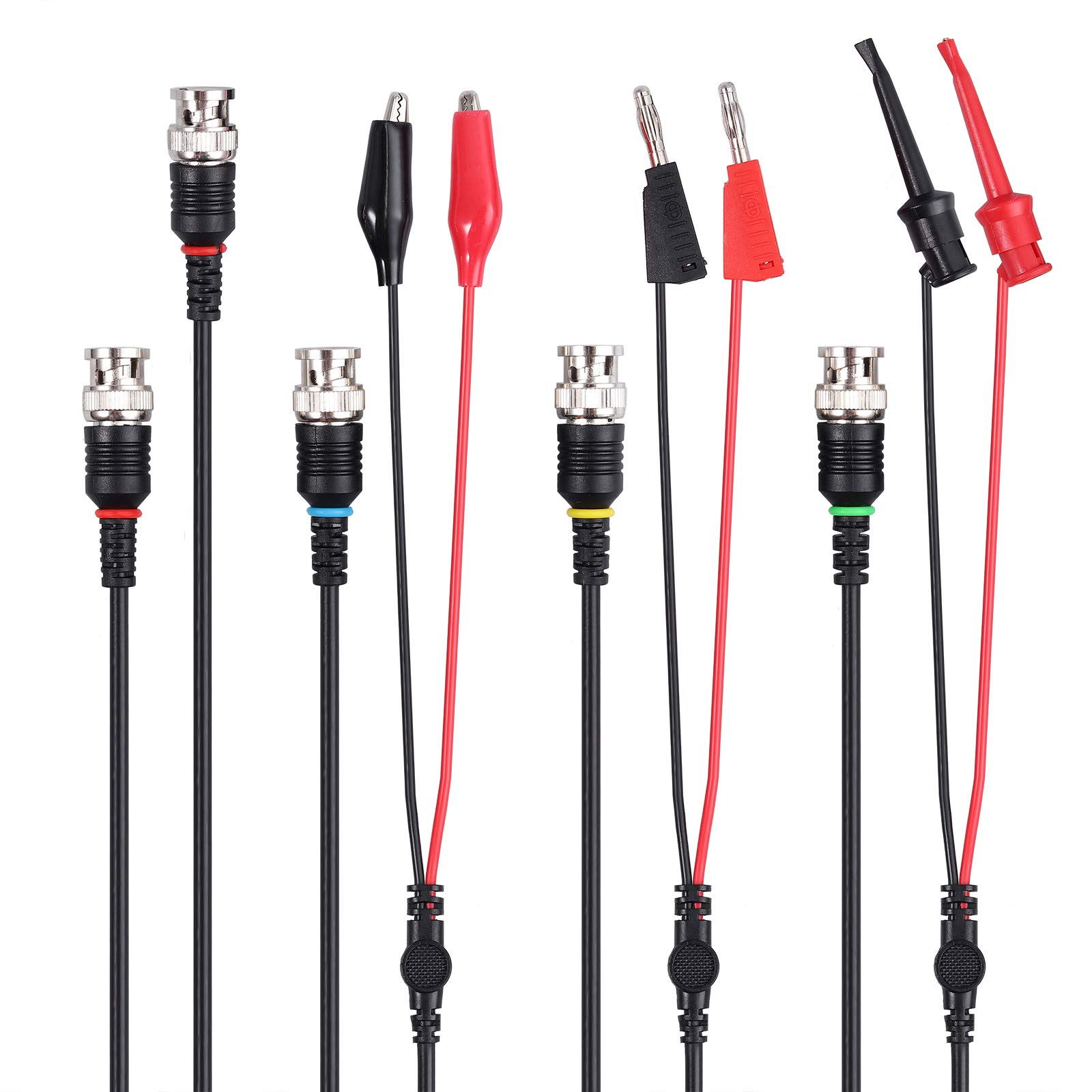Hi! Did you bump into this post from the pin on !diy@hexbear.net? Check on my current progress on my user posts! This account is a dedicated alt for this project alone, sorting by my new posts will show the latest on this project.
Hey 🥰 I'm a transfem who's been working on something that I think might be of interest here and I'd love to share, because I believe that we can share a very mutually beneficial relationship. This post is about permanent hair removal.
I am going to use the term "transfeminine" in the following as an abridged version of "transfeminine, non-binary, and any other individual, queer or not, who would feel more confident and affirmed with less facial or body hair". This is a project for everyone.
A little bit of background on permanent hair removal:
Really, the only two options on the table are laser/IPL and electrolysis. Speaking to the former first, laser/IPL is without a doubt the most accessible of the two options, but it comes with a lot of drawbacks. For one, laser/IPL is neither permanent nor complete. This may sound like an immediate dealbreaker, but the ability to delay and diminish hair growth down to light wisps for months to years at the cost of only a handful of sessions makes it a valuable instrument in transfeminine gender affirming hair removal. The drawbacks don't end there though; another serious and deeply unfortunate drawback of laser and IPL hair removal is that they don't work on all skin tones and hair colors. The mechanism of action depends on light passing through the skin and being absorbed by hair roots (which then heats up the follicle, damaging it, hopefully, to the point that it is unable to continue growing), meaning both light skin and dark hair are requirements for eligibility. This is deeply unfortunate for all but People of Pasta. ![]() There are other drawbacks, like an increased incidence of adverse skin reactions relative to electrolysis, but the two issues noted above make it a non-starter for black and brown folks and extra-bleached-flour crackers. These issues in mind, laser/IPL is a tool that can be relied on at times, but for trans folks, laser/IPL is a non-starter for bottom surgery preparation due to the incompleteness and temporary nature of the procedure.
There are other drawbacks, like an increased incidence of adverse skin reactions relative to electrolysis, but the two issues noted above make it a non-starter for black and brown folks and extra-bleached-flour crackers. These issues in mind, laser/IPL is a tool that can be relied on at times, but for trans folks, laser/IPL is a non-starter for bottom surgery preparation due to the incompleteness and temporary nature of the procedure.
Electrolysis is permanent, 100% complete, works on all skin tones and hair colors, and has a lower incidence of skin-related side effects. Perfect! What's the catch? Electrolysis is expensive as fuck. Where a complete course of bikini area laser or IPL may cost hundreds of dollars, the same area with electrolysis will cost thousands, sometimes as high as tens of thousands of dollars, due to the fact that unlike laser/IPL, which takes a second per exposure and can be done in areas of hundreds of hairs at a time, electrolysis must be done hair by hair, which is a lot of time to spend with a licensed cosmetologist/electrologist. Costs are similarly prohibitive for facial electrolysis, and even more wildly exorbitant for body hair removal due to the large surface area, so much that it is virtually never even discussed as an option for this. This won't do either. What is to be done? ![]()
The mechanism of action of electrolysis hair removal is to insert an electrode in the form of a fine needle down the hair shaft and pass a current through the electrode, into the hair root, and out through a return electrode elsewhere in the body. This causes an electrochemical reaction in the hair root that produces a few nano/microliters of lye, which super, definitely, for sure kills the hair. (if you know the difference between galvanic, blend, and thermolysis, you're way ahead of the class, good eye but I'll bring it up again later.)
At home electrolysis exists, but it is not easy or cheap as it currently stands. Issues with machine quality, battery consumption, and power make this an option, but an undesirable one. My hope is that we can make it easier, cheaper, and safer, by designing an option that is more robust, more available, eats through fewer batteries, operates with greater power, and is designed with constant dynamic community dialog.
One thing I didn't lose in my transition is my audacity: surely I can make a device that applies a small current through a fine needle-like electrode in a short burst, right? So I got to researching. Can I buy professional-quality electrolysis needles without a cosmetology license? (yes, I can!) Are there readily accessible schematics for precision low-amperage current sources widely available? (yes, there are!) Are there resources available not paywalled behind cosmetology/electrology programs to learn to use this thing once I have a prototype? (yes, there are!) Has anyone tried to do this before? (Yes!!! Twice!!! More than that! Reddit user /u/abbxrdy, Github user ivanbarayev, the folks on the Hairtell forms, and Andrea James at Transgender Map, I have so much love in my heart for you. Here's to hoping that your work forms the foundation to bring accessible hair removal to all.)
My goal is to make a highly buttoned up, safe, accessible, and presentable electrolysis solution for transfeminine people to use on themselves, each other and for others to use on them. I want to cut out the cosmetologists, or specifically those in the electrolysis chain that take the surplus value from transfeminine people, like salon owners and machine manufacturers. I also want to avoid reliance on sparsely available, weak, and poor quality machines, which are the current sole option for at-home electrolysis. Ultimately, the goal is to bring safe, highly effective, and accessible electrolysis hair removal to all. Currently existing solutions generally fail on at least one of these. My objectives are as follows:
- Develop a circuit that can administer a 0.1 to 10 second pulse of current between 0 and 2 mA at a voltage between 0 and 25 V through an electrode upon each press of a button, foot pedal, or even bite switch, with no wall plug-in for safety reasons - battery power only.
- Make it into a printed circuit board that can be ordered and built out with no more than a soldering iron and YouTube tutorial level soldering skills.
- Develop a design for a probe that can hold an electrolysis needle, that can be actualized at home, without any advanced tools.
- Create a high quality and easy to follow manual for the build and usage of the device. This is missing with all current DIY solutions. This has to be something that is truly accessible to all - no electronics knowledge, wiring, debugging, multimeters, or anything else like that necessary.
- We're shooting for a budget under $100, but in general, cost is a deciding factor. It's not accessible if it's expensive.
- For now, my intention is to start with a galvanic only electrolysis machine. Blend and thermolysis produce much faster results, but I don't feel as confident working in high frequency electronics, and with galvanic being the most reliable option, despite being slower, it's the obvious pick for the 1.0 version. If this takes off, the plan is to continue with a blend or a mode-selectable version, which would really democratize electrolysis. If this works, blend electrolysis provides ten times faster hair kill time, and it's next on the menu. 👀
Here's what I'm capable of doing by myself:
- I'm an experienced multidisciplinary engineer. I have the skills to see through a basic version of this project to completion.
- I can also write a nice assembly and usage guide, I have experience in guide and technical writing for laypeople.
- I can bankroll all R&D and prototyping.
Here's what I would definitely benefit from community help on:
- I work terribly alone. I find it hard to get motivated if I don't have a team to share the work with or at least bounce ideas off of. I'm also not deeply experienced in this, and community collaboration will get rid of a lot of stumbling blocks that are probably easy avoidable. If you're experienced in analog electronics, you're the number one type of person I'm looking for, but I'd also love to work with digital/embedded folks when it comes to interface/UX time, or additionally anyone with electromechanical design experience for the probe.
- Saving the above, I still do much better with folks on the sidelines cheering me on, asking me questions, and keeping me accountable than I do alone, even if I'm working by myself.
- If you're a professional electrologist, I'd love to know what you like and don't like in a machine, what features are mandatory, what features are nice to have, and what features are pretty useless. If you have any other tips and advice, let me know!
- If you've tried DIY electrolysis before, please tell me how it went and how I can do better than whatever your most recent attempt was!
- I need help discussing the licensing. Do I want to go hardline GPL to prevent this from being picked up by manufacturers? Do I make it as open as possible with the hopes that someone can fabricate nice ones? Do I allow for manufacture with the provision that royalties be paid to some entity, which can then be redirected to some mutual aid project/charity/Maoist insurgents? Maybe even use a personal use only clause so I reserve the option to sell units as a worker's cooperative? This is all cart before the horse shit, but it's stuff that needs to get worked out before I make a github.
- What do I call it???
Going forward, I plan to post regular bi-weekly updates to keep this alive, days of the week pending Maybe Thursday and Sunday?. Look forward to the first journal entry/post tonight where I show off what I have so far! I think /c/diy is the most applicable place to post due to the comm purpose, but this initial post is getting cross-posted to /c/traaaaaaannnnnnnnnns due to the relevance in that community.
Let's stay in touch! This is an alt but I'll be checking it frequently. Thanks for being an awesome online community and I hope this can happen in a way that results in material good for my comrades. ![]()
To improve the accessibility, it would be super cool if at least one version of the design could be prefabbed by JLCPCB using SMD components, so people can get away with minimal to no soldering.
I love this, I haven't worked with them before but I'm big into it
I'm designing to only use super common components, I'm hoping I can get away with more or less just a boost converter I haven't shopped for yet, an LM317, and an LM324 (minus an MCU which I'll make a call on eventually), so that availability, cost, and total IC count are lower, which should drive the cost of assembly down with external assemblers too. I'll look into JLCPCB
A friend designed an ergo keyboard such that many of the components could be soldered on by JLCPCB, and it was definitely more expensive than full DIY but not too pricy ($86 for ten PCBs with all components soldered on vs like $15 for bare PCBs). I think he just picked components that were in JLC's catalog, but lmk if you have questions and I can check if he has answers.
I actually do have a question, I was going with this plan but getting frustrated at seeing all of the components that weren't in stock - do they restock pretty quick as soon as you order, or do you need to design for only things that are in stock? Thank you!
Y’know I actually have no idea. I think you just have to wait until components are in stock to order, but maybe they can place your order and just wait for back ordered components? For the keeb, everything was in stock when we ordered.
now just need an auto-targeting system so that my shakey hands dont result in a giant gash. auto-targeting electric needles also sounds like some sort of terror device
We should put this "electrolysis machine" on a quadcopter, just to see what would happen.
Would probably bump the cost up a bit, but I feel like some tiny surface scan that adjusts the needle point would be possible.
Or maybe following the hair in? Idk
 in your endeavors.
in your endeavors.I wonder if e-cig design can be rejigged into high voltage/low amp design, it does everything else
First off, this is rad as fuck. Second off, I'm down to help in any way that I can. The most applicable skills I have for this project would be my hobby level experience with low volt electronics, 3d printing, and 3d modeling.
hi and thank you for your interest <3
At some point down the line I'm gonna want to put it in an enclosure, you'd be perfect for that! I'm gonna post my working circuit diagram tonight if you wanna build along and poke at it, but I'm at the stage where it takes like 3 multimeters and 2 benchtop supplies to test if the thing works so I'm mostly working in SPICE. once I'm more confident and have an actual design that people can like, make, I would def love people to buy a PCB and a parts list, test the build, and then maybe get some stress testing in! Stay tuned there's plenty for people to do that I just haven't articulated yet :meow-hug:
oh fuck yes stuff like this is becoming my new obsession
 ty for posting it can't wait to see this project come to fruition
ty for posting it can't wait to see this project come to fruitioni don't have any relevant expertise that isn't horribly rusty but i can serve as an excellent cheerleader!!

You probably know him already, but this sounds like something a portion of Zack Freedman's community might be interested in helping out on.
Very cool. I'll 100% forget to check in on DIY and forget all about this, so if it isn't too much of a problem, will you ping me on your posts? Thanks!
absolutely! And also I said I was gonna crosspost and then totally didn't, partly because I don't know how besides just pasting the URL in to a post over there, but ya I'll ping when I update!
Crosspost is besides the star, to the left of the three (vertical) dots. carcosa added it to the trans megathread too: https://hexbear.net/comment/4662430
Thanks!
Add me to the ping list please, I don't want to miss an update!
One thing I didn't lose in my transition is my audacity
Loved this bit <3
I had a few ideas off the top of my head that might be useful.
- Adam Savage's guide to wearable magnifiers
- For generating a wave, the PiFM project lets you use a first generation raspberry pi to transmit FM or AM from 0 - like 400 MHz at 5v, and all straight off an easy to attach to GPIO pin. Maybe you could fuck with the line voltage going into the pi a little, or use some kind of amp? Maybe even one of those cheap as dirt 8 watt Baofeng radios which can be hacked easily to cover a wide range of frequencies? From personal experience licking the antenna port stings quite a bit... :>
- For holding the needles, I'm having a hard time getting an idea of what size they are but would some kind of oscilloscope probe do it?
Show
Particularly the little hook grabber ones?
I found a YouTube link in your comment. Here are links to the same video on alternative frontends that protect your privacy:
hi I am one thousand percent ordering one of those wearable magnifiers, thank you so much! I'm avoiding RF anything until after I have a working galvanic 1.0 made, but these are interesting options because I'll need to do a lot of intensive power testing. Here's the best on the needle: https://synopticproducts.com/collections/f-shank/products/ballet-f2-f6-stainless-needles-probes-002-006?variant=40311120756817 /u/abbxrdy in the reddit post I linked noted that the shank fits perfectly into a D-sub crimp socket, which I might try to work with
First and foremost, you are now my favorite human ever. I was just looking at electro costs today for the first time and crying cause Im unemployed and dont think ill ever be able to afford it. This would be such a game changer, it would literally change my life and access to care. You are a beautiful person for doing this

Ok gushing out of the way, I would love to contribute and help make this a reality, but dont really know how. I can write code (most relevant to this project, ive done a toy OS and bootloader in C), and am familiar with a handful of licenses. Ive also done basic home electronics (winding my own pickups, building and programming a mechanical keyboard, rewiring guitars, etc). Im also pretty ok at writing documentation and could do some latex magic to produce nice looking user and service manuals, as well as build instructions. But for the time being, I want to cheer you on!!! This project has made my day so much better just from the prospect of it existing, thank you

As far as the name goes, im unsure. But the mascot should be a hairless creature, like the sphynx cat or naked mole rat.
Thank you so much for beginning this project, it has serious impact and just reading this made my day far better and less distressing. You are a wonderful person!

Editing to add that perhaps you could consider something like sourcehut as a forge provider instead of github? With sourcehut anyone with an email address could contribute, and you could always mirror to github for visibility if you wanted.
I like the Sphynx idea! That's my tentative pick for a name! See my new post incoming today for more details!
I also checked out Sourcehut, they look like exactly what I'm looking for and I intend to get set up with them soon. Hosting projects is in their paid tier, but I think it's worth, they seem like good folks.
Yo dumb question but can you repurpose like sound cards or radio equipment as high frequency signal generators? I meanI get the voltages are gonna be too low but current might be adequate so you might even be able to avoid some issues with inductance/ringing that you get switching complex circuits at high frequency.
I'm a nobody though, there are probably huge issues I'm not seeing. Please nobody without electronics expertise try this.
Hmm 27 MHz is faster than anything designed for audio. Shame. not radio transmission though
CB radio operates around 27MHz, and the 10m amateur radio band is close, at 28MHz. With a legal power limit of 1.5 kilowatts (on the ham bands), there is a lot of high power equipment available (as well as low power, portable equipment). My HF transceiver can put 100 watts into an antenna at these frequencies. There are lots of schematics and kits (and likely off-the-shelf ICs) floating around for DIY transmitters as well. I imagine you woudn't need a whole tranceiver, but the circuitry to generate signals at these frequencies is a prerequisite to build any of these things.
This is what radio people refer to as "high frequency." The majority of modern radio equipment operates at even higher frequencies than this (VHF - "very" high frequency, UHF, "ultra" high frequency, microwave, etc).
I haven't devoted all that much energy to it (ha) but I was honestly just thinking of finding a high frequency opamp (they sell these way up to 50 MHz and higher) and just making an oscillator with all the impedance matching squared away, but definitely something I'm not the most comfy with. I also looked into CB and 10 MHz HAM transmitters (although I'm fairly sure 27 MHz is higher than most thermolysis happens at, I think 10 MHz or even lower should be fine)
I have limited experience with electronics beyond rando hobbiest with a pile of half complete projects. I do have a very dusty physics degree though so maybe slightly more able to contribute technically?
At any rate, I'd be keen to do what I can to help. This has both selfish and selfless appeal being a hairy slav trans woman. Plus I can feel my brain falling out of my ears with each passing day further from technical work.
Yeah sorry I meant radio equipment would work but audio wouldn't. Worth noting legal civvy bands vary with country and access to equipment has varying degrees of regulations (sniff, pirate radio seemed cool). Like in aussieland where I am you have to lock down firmware for any transmitter in phones.
Good to have proper info from a radio person though. Speaking of is amateur worth it? we get fires up here a lot and I wonder if it's a skill worth learning but the clubs are sausage fests
I built an iontophoresis machine recently, which is a fancy way of saying "15mA-ish constant current supply". Galvanic seems like the sort of thing you could do with
constant current source (lm317 gang) -> mosfet clamp to ground (controlled by whatever pulse generator you pick) -> electrode
I think you have the right idea with prefab boost converter. I have a little USB-to-9V adapter, this type which I use with a USB battery bank to power an oscilloscope. Might want to do something like that, commodity assemblies are your friend.
I've used JLCPCB before but not their assembly. If you don't get it assembled, check out https://pcbshopper.com/ in case someone else offers cheaper boards per area.
I'm not a professional EE but I'd happily review board. I also got helpful reviews from https://www.reddit.com/r/PrintedCircuitBoard/ in the past. Curious, is "multidisciplinary engineer" a real job making prototypes or are you just a specialized engineer who can also make prototypes on the side? Bc if it's a real job I want that please let me know how you got it.
A Reddit link was detected in your comment. Here are links to the same location on alternative frontends that protect your privacy.














